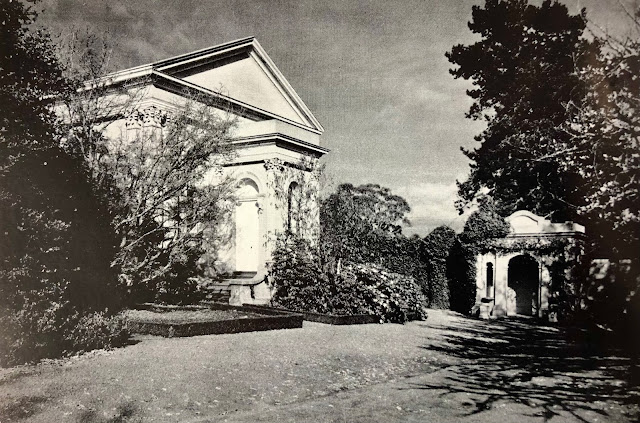No. 1574 - Blackmans Bay - Kingsborough Salvation Army Hall (1994)
Blackmans Bay is located close to the town of Kingston which is approximately fourteen kilometres south of Hobart. It is named after James Blackman who made a claim for a grant of land in the area in about 1844. It was once a popular place for holiday shacks but is now a residential area.
The Kingborough Salvation Army Hall takes its name from the local government area which includes Blackmans Bay. As a relatively recently established place of worship, there is very little information about the history of the hall. A plaque records that the building was opened and dedicated by Commissioner John H Clinch on 7 August 1994. As more information becomes available this article will be updated.
The Companion to Tasmanian History has the following concise summary of the history of the Salvation Army in Tasmania:
“The Salvation Army had a seminal link with Tasmania. Launceston businessman and philanthropist Henry Reed, living in London, gave William Booth over £5000 to establish the Salvation Army on a firm footing in about 1870. In 1883 the Salvation Army Launceston Corps began operating, and corps were formed in Hobart, Latrobe, Waratah and other towns. Marches by these 'militant servants of Christ' through the two main cities with loud music attracted the larrikin element or 'roughs', who exploded flour bombs in the Salvationists' faces or threw mud and beer. Some Salvationists were arrested for marching without permission or refusing to desist from making excessive noise, but the 1891 visit of General Booth ensured the success of the Salvationists. They worked in gaols and courts, and their social work included managing child endowment, running soup kitchens in the winter and during depressions, and distributing clothes. Maternity hospitals were opened in Hobart (1897) and Launceston for unmarried mothers and other young women 'to whom life had been unkind'. During the Second World War Salvationists ministered to the troops in military camps, organised community singing among rural workers, and, in Hobart and Launceston, opened accommodation for women”.
“After 1945 the Salvation Army responded to new social problems by extending its services into assisting the homeless, missing persons, drug, gambling and alcohol abuse, disability and migrant services, employment and aged accommodation, and helped in emergencies like the 1967 bushfires”.
Additional information about this church is most welcome as all articles are continually updated. I can be contacted through this page or my Facebook page "Churches of Tasmania”.
The Kingborough Salvation Army Hall takes its name from the local government area which includes Blackmans Bay. As a relatively recently established place of worship, there is very little information about the history of the hall. A plaque records that the building was opened and dedicated by Commissioner John H Clinch on 7 August 1994. As more information becomes available this article will be updated.
The Companion to Tasmanian History has the following concise summary of the history of the Salvation Army in Tasmania:
“The Salvation Army had a seminal link with Tasmania. Launceston businessman and philanthropist Henry Reed, living in London, gave William Booth over £5000 to establish the Salvation Army on a firm footing in about 1870. In 1883 the Salvation Army Launceston Corps began operating, and corps were formed in Hobart, Latrobe, Waratah and other towns. Marches by these 'militant servants of Christ' through the two main cities with loud music attracted the larrikin element or 'roughs', who exploded flour bombs in the Salvationists' faces or threw mud and beer. Some Salvationists were arrested for marching without permission or refusing to desist from making excessive noise, but the 1891 visit of General Booth ensured the success of the Salvationists. They worked in gaols and courts, and their social work included managing child endowment, running soup kitchens in the winter and during depressions, and distributing clothes. Maternity hospitals were opened in Hobart (1897) and Launceston for unmarried mothers and other young women 'to whom life had been unkind'. During the Second World War Salvationists ministered to the troops in military camps, organised community singing among rural workers, and, in Hobart and Launceston, opened accommodation for women”.
“After 1945 the Salvation Army responded to new social problems by extending its services into assisting the homeless, missing persons, drug, gambling and alcohol abuse, disability and migrant services, employment and aged accommodation, and helped in emergencies like the 1967 bushfires”.
Additional information about this church is most welcome as all articles are continually updated. I can be contacted through this page or my Facebook page "Churches of Tasmania”.
https://www.utas.edu.au/library/companion_to_tasmanian_history/S/Salvation%20army.htm - Written by Stefan Petrow for the Centre for Tasmanian Historical Studies (2006)




Comments
Post a Comment